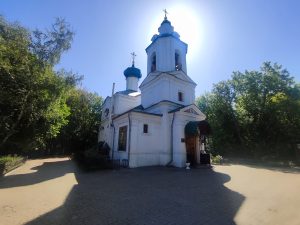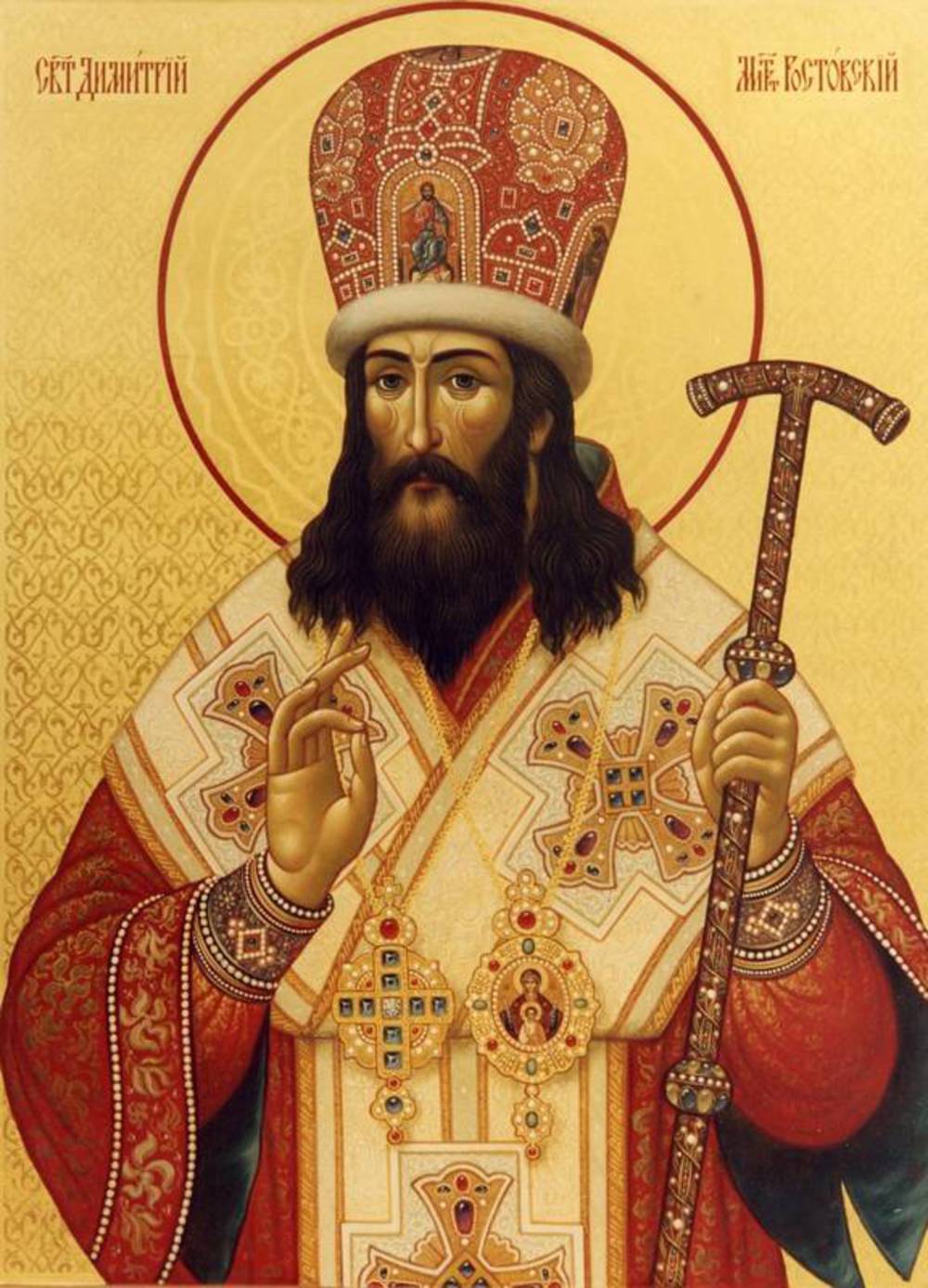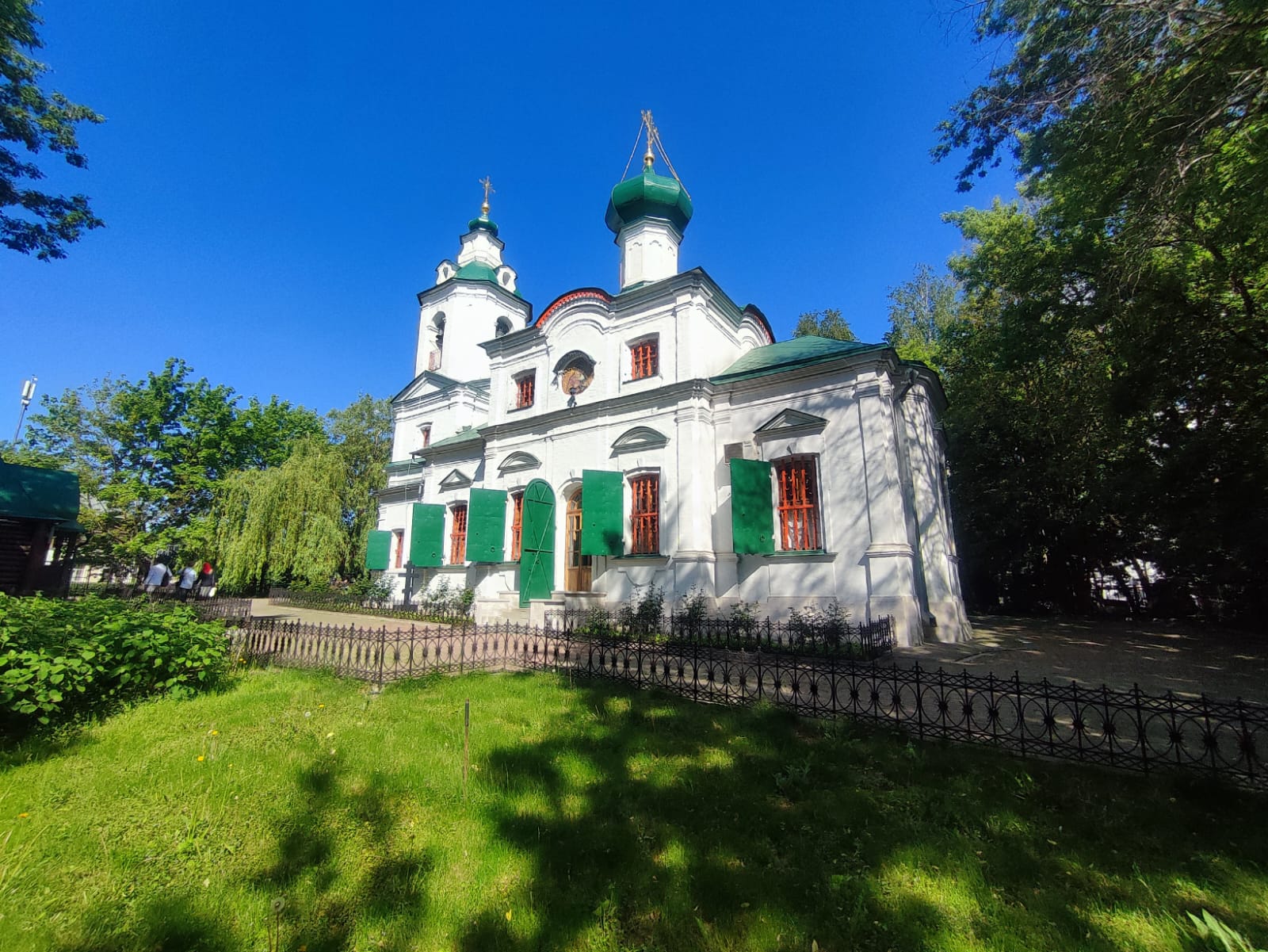Church of St. Dimitry, Metropolitan of Rostov, in Ochakovo

Dimitri of Rostov (in the world Danila Savvich Tuptalo, 1651-1709) was an outstanding bishop of the Russian Orthodox Church, Metropolitan of Rostov and Yaroslavl, a famous spiritual writer, hagiographer, preacher and teacher. He was born in the town of Makarov, Kiev regiment, in the family of centurion Savva Tuptalo. He was educated at Kiev Fraternal College (later Kiev-Mohyla Academy), and in 1668 he took monastic vows at the Kirillov Monastery. In 1675, he became a hieromonk and began preaching, soon becoming famous for his speeches. Travelling through the monasteries of Ukraine, he conducted a “Diarium” in Polish, where he recorded important events of that time. In 1681, he was elevated to the rank of abbot and headed several monasteries. In 1684, he settled in the Kiev Caves Monastery, having been commissioned to compile the lives of the saints. This work, known as the “Book of the Lives of Saints” or the Chetii-Minei, became the main legacy of Demetrius and had a huge impact on Slavic culture. In 1697, he was elevated to the rank of archimandrite, and later appointed as rector of the Novgorod-Seversky Monastery of the Transfiguration. In 1700 by decree of Peter I, he was summoned to Moscow as a candidate for the see of Tobolsk, but due to illness in 1702 he was appointed as Metropolitan of Rostov. In his diocese, he actively fought against ignorance, drunkenness, Old Believers and Catholic influence, paying great attention to education, for which he founded the Slavic-Greek school. He was deeply worried about the fate of the church, noting that in his time “a special faith was being invented in almost every city.” Dimitri of Rostov died in 1709 in Rostov the Great, choosing the Church of the Conception of the Yakovlevsky Monastery as his resting place. In 1757 he was canonized, becoming the first saint to be glorified during the Synodal period. The memory of the saint is celebrated on September 21 (the finding of the relics), October 28 (repose), and also as part of the Cathedrals of the Rostov-Yaroslavl and Siberian saints. The temple was built in 1761. After the 1917 revolution, the church was closed. It was only in 1992 that the church building was returned to the faithful, after which regular services began to be held.
Address: Moscow, Generala Dorokhova str., 17

